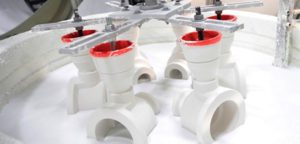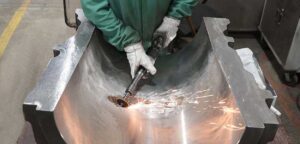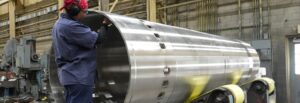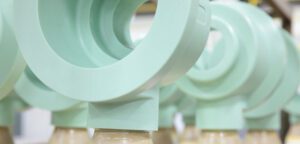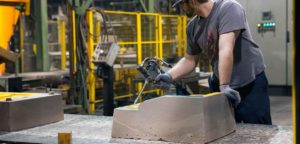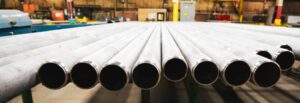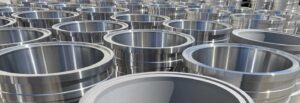Blog Archives
Investment casting has many benefits over other casting processes. Ranging from cost savings (reduced machining costs and material use) to fine detail, tight tolerances, and superb surface finishes. MetalTek’s Wisconsin Investcast Division produces investment castings up to 1,000 lbs. (finished weight). While there certainly are some drawbacks to investment casting, those aren’t related to the…
Read MoreWhat Is Bearium Metal? Bearium Metal is a group of high lead tin bronze alloys containing virgin copper, tin, and specially processed lead. These bearing bronzes provide every desirable feature found in other bearing metals, plus certain superior characteristics which are proprietary to MetalTek International. There are four grades available: B-4, B-8, B-10, B-11. Benefits…
Read MoreMetalTek’s Sandusky International Division is a leading supplier of large metal components for high-heat, high-wear, and high-corrosion applications in a range of demanding industries. Founded in 1904 to primarily serve the paper industry, Sandusky International evolved over subsequent decades and now serves markets as diverse as: In 2023 Sandusky International secured a substantial order from…
Read MoreInvestment casting, also known as lost wax casting, is a metal casting method for shaping metal parts that often have more intricate cavities or geometries. The process begins with shaping the final part out of wax, adding a ceramic shell over the wax, and then melting the wax out of the shell. Molten metal is…
Read MoreSand casting is a versatile and cost-effective solution for the creation of metal parts. In fact, most metal components can be manufactured using the sand casting method. Sometimes called sand mold casting, sand casting is a great process for small or large-volume orders. To learn more about the various steps of sand casting process, check…
Read MorePlanned turnarounds are regular occurrences in the life cycle of a petrochemical plant. Every few years, a plant goes offline for a few weeks to upgrade capital equipment, perform regular maintenance, or improve worker safety. These activities cannot take place while a plant is operational. When properly executed, a planned turnaround limits the downtime and…
Read MoreStainless steel is one of the world’s leading metals in various applications. It provides exceptional corrosion resistance, durability, and aesthetic appeal. While the name suggests that it is impervious to everything, stainless steel is still susceptible to problems metals face, like rust and corrosion. The critical difference is its longevity to withstand elements without showing…
Read More
